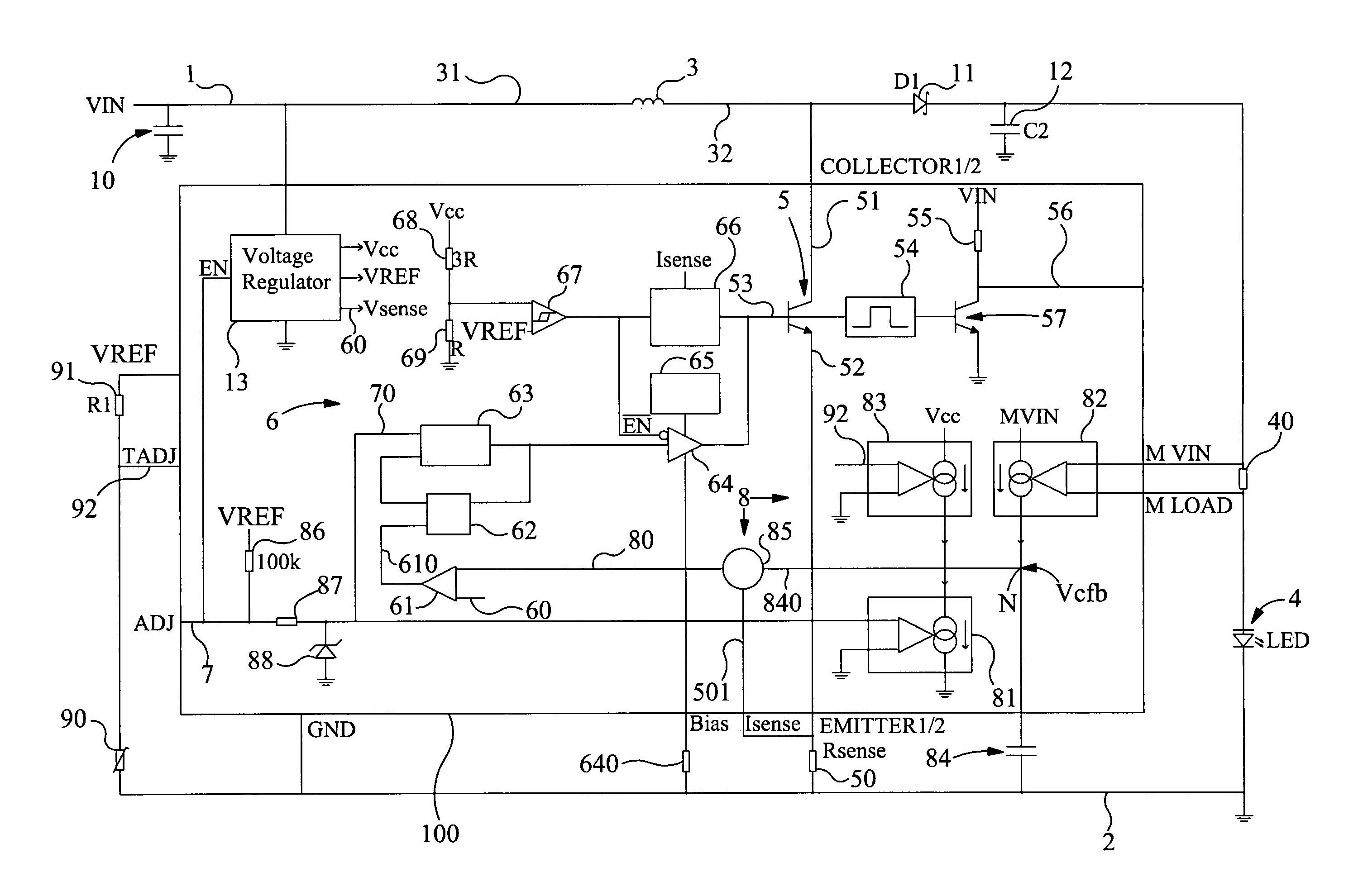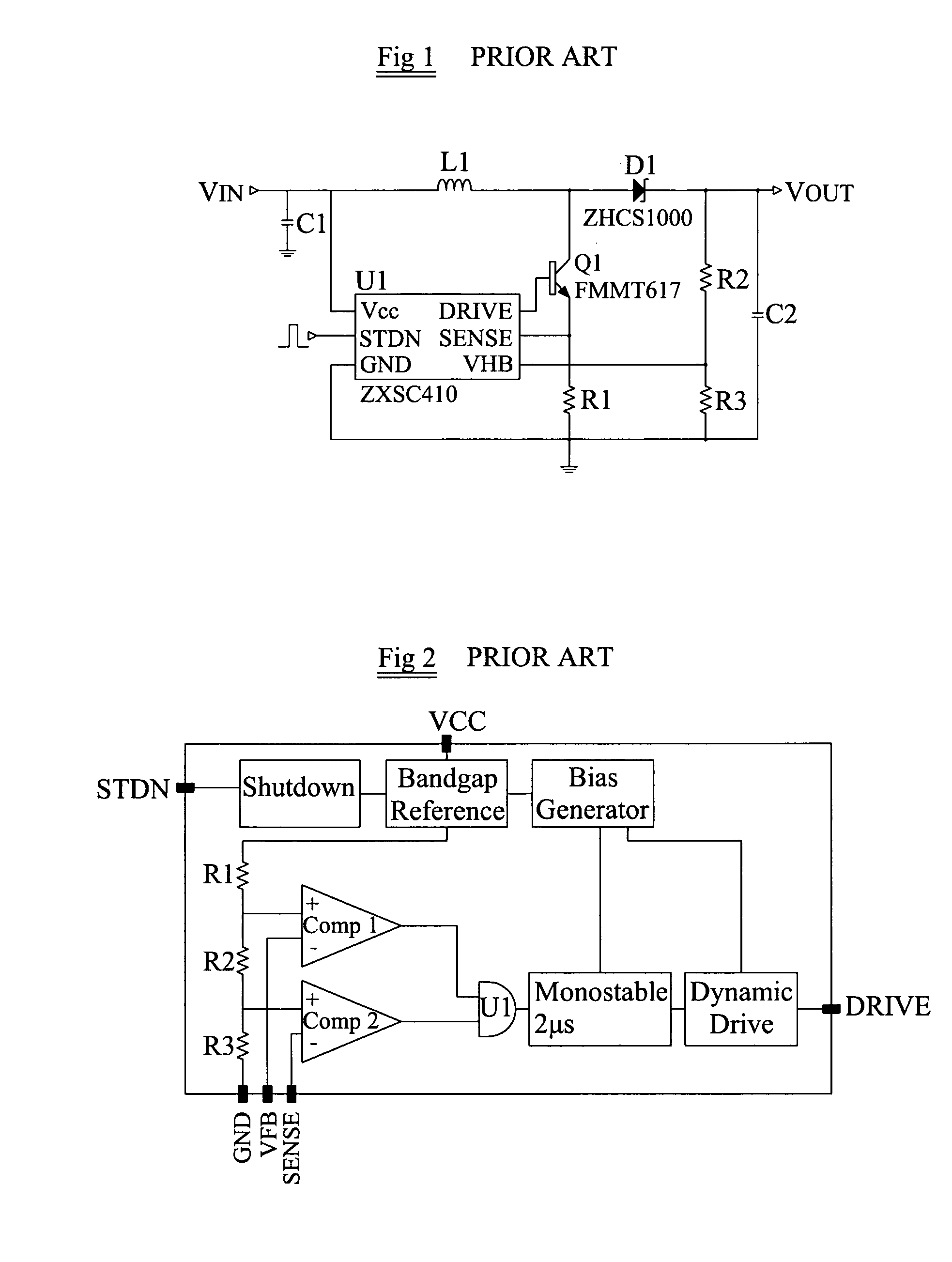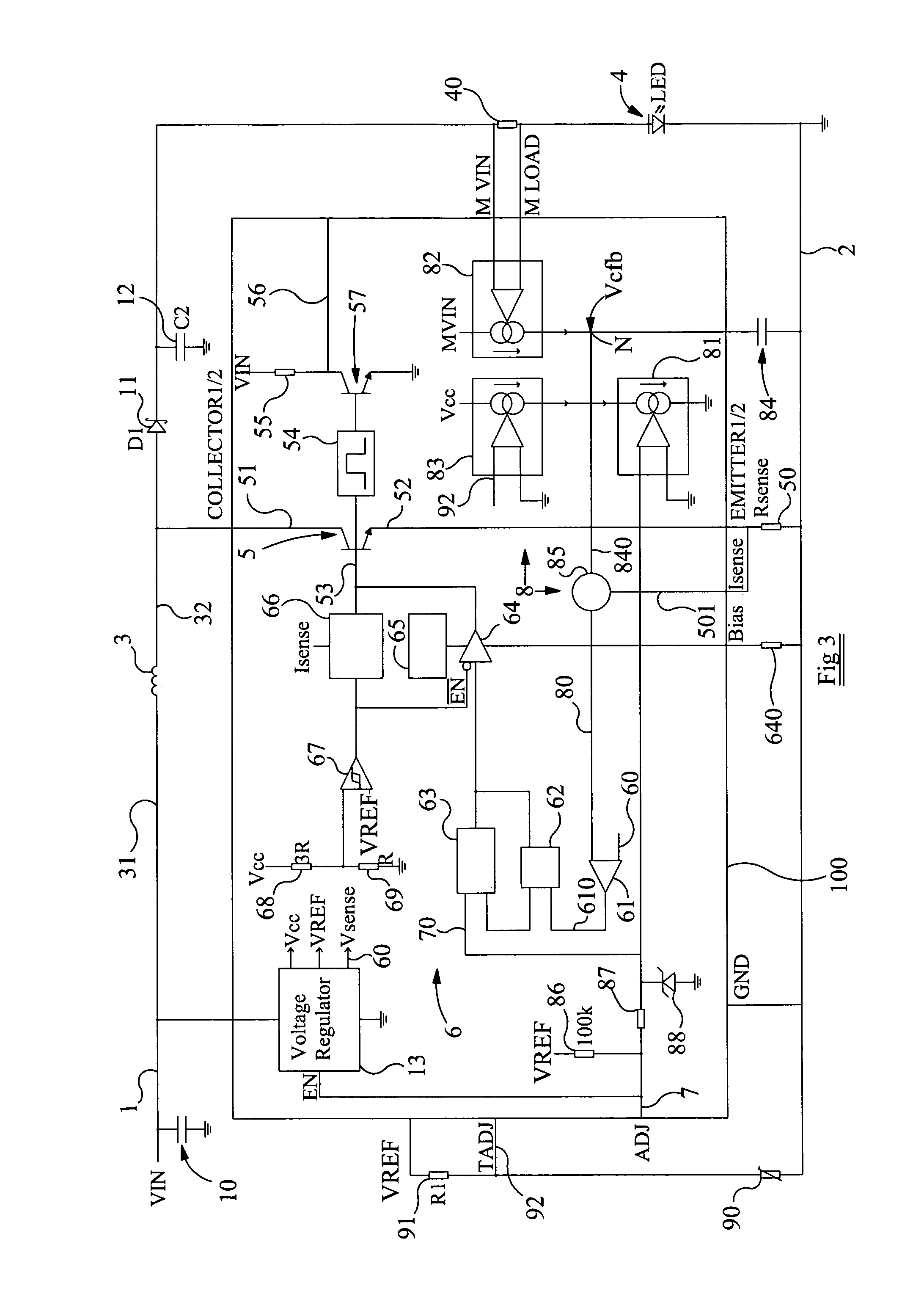Current driving method and circuit for controlled driving of light-emitting diodes
a technology of light-emitting diodes and current driving, applied in the direction of electric variable regulation, process and machine control, instruments, etc., can solve the problems of complete working and audible whistle, and achieve the effect of avoiding thermal damag
- Summary
- Abstract
- Description
- Claims
- Application Information
AI Technical Summary
Benefits of technology
Problems solved by technology
Method used
Image
Examples
Embodiment Construction
[0116]Referring now to FIG. 3, this shows a circuit embodying the invention, which can also be described as a drive circuit embodying the invention, arranged to drive a load 4. The circuit comprises a first supply rail 1 and a second supply rail 2 for connection to a dc power supply, providing a supply voltage Vin. An input capacitor 10 is connected between the supply voltage input and ground. An inductor 3 (L1) has a first inductor terminal 31 connected to the first supply rail 1, and has a second inductor terminal 32. A load 4 is connected in series with load current monitor resistor 40 (RM) between the second inductor terminal 32 and the second supply rail 2. In series with the load 4 is a diode 11, and an output capacitor 12 is connected in parallel with the load and RM, between the diode 11 and ground. In this embodiment the load 4 is a 3 W LED. The circuit also comprises a controllable switching device, in the form of a bipolar transistor 5, and a switching device current sens...
PUM
 Login to View More
Login to View More Abstract
Description
Claims
Application Information
 Login to View More
Login to View More - R&D
- Intellectual Property
- Life Sciences
- Materials
- Tech Scout
- Unparalleled Data Quality
- Higher Quality Content
- 60% Fewer Hallucinations
Browse by: Latest US Patents, China's latest patents, Technical Efficacy Thesaurus, Application Domain, Technology Topic, Popular Technical Reports.
© 2025 PatSnap. All rights reserved.Legal|Privacy policy|Modern Slavery Act Transparency Statement|Sitemap|About US| Contact US: help@patsnap.com



